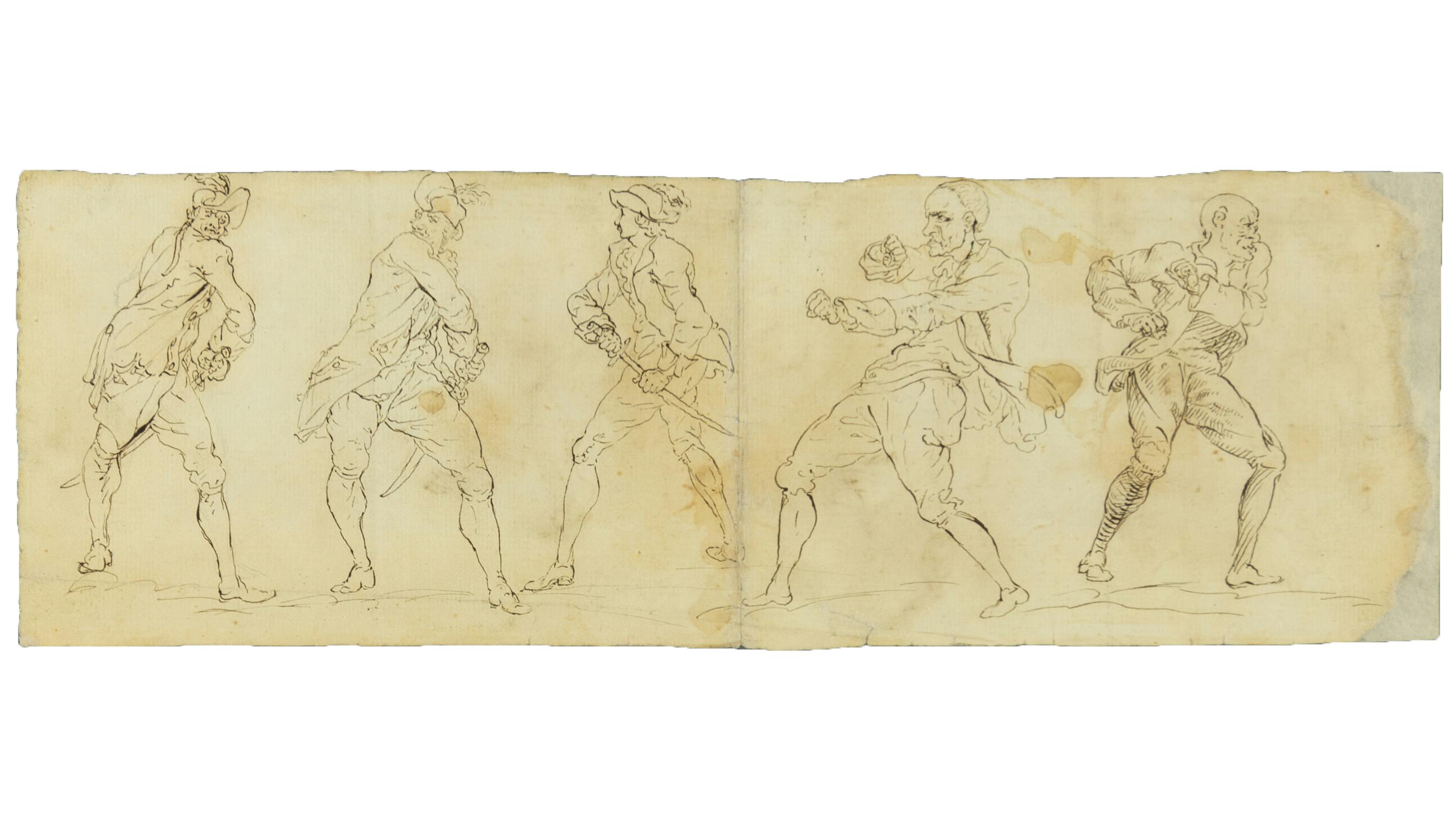News & Updates
In the News: Discovery of Eyewitness Sketch of the North Carolina Brigade
April 15, 2024
Now on view at the Museum outside the second-floor Alan B. Miller Theater!
The Museum recently announced the donation of a rare, never-before-documented eyewitness pen-and-ink sketch depicting Continental Army soldiers and camp followers marching through Philadelphia on Aug. 25, 1777. This sketch is the first wartime depiction of North Carolina troops known to exist, and it's only the second-known depiction of female camp followers of the Continental Army done by an eyewitness. Catch up with recent news stories about the sketch and acquisition below.
The sketch shows soldiers and camp followers of the Continental Army’s North Carolina Brigade marching through Philadelphia on Aug. 25, 1777, on their way to join the rest of General George Washington’s army stationed south of Philadelphia. These troops would go on to fight at the battles of Brandywine (Sept. 11, 1777) and Germantown (Oct. 4, 1777). The inclusion of two female camp followers, including one holding an infant, shown riding in a wagon exemplifies a direct defiance of known regulations at the time about how women following the army could use wagons. Earlier in August, before the brigade’s march through Philadelphia took place, Washington himself brought up issues of women and children slowing down his troops, calling them “a Clog upon every movement.”

An ink inscription below the vignette of the North Carolina Brigade reads, “an exact representation of a waggon belonging to the north carolina brigade of continental troops which passed thro Philadelphia august done by …” with the rest of the lettering cut away due to an old paper repair. After detailed research, handwriting analysis, and comparison to similar sketches, Museum curator Matthew Skic, who discovered the sketch hanging in a Manhattan home, identified the sketch’s creator to be Switzerland-born artist and collector Pierre Eugène du Simitière (1737-1784), who settled in Philadelphia in about 1774 and is now known for documenting the rising American Revolution as it happened. Du Simitière went on to create from-life profile portraits of prominent Revolutionary leaders including Washington and he suggested the motto “E Pluribus Unum” through his rejected design for the Great Seal of the United States in 1776. In 1782, he founded the first museum in the United States that was open to the public.
On the reverse of the North Carolina Brigade sketch are five studies of two male figures, one brandishing a sword and the other engaged in a fist fight. Artists frequently sketched studies like these when they were working on larger works, as it allowed them to try out different poses or details and to get a sense of the scale of the larger drawing or painting.
The sketch was gifted to the Museum by Judith Hernstadt and was conserved due to generous contributions from the North Carolina Society of the Cincinnati, which is comprised of descendants of officers of the North Carolina Continental Line.

In Case You Missed It
Washington Post
"Sketch in N.Y. apartment turns out to be rare Revolutionary War drawing"
Read More
Philadelphia Inquirer
"How a curator at the Museum of the American Revolution solved a nearly 250-year-old art mystery"
Read More
Smithsonian Magazine
"Rare Eyewitness Sketch of American Revolutionaries Found Hanging in a Collector’s Bedroom"
Read More
Artnet
"A Rare American Revolution Drawing Was Found Hanging in a New York Apartment"
Read More
The Collector
"An American Revolution Drawing Found in a NY Apartment"
Read More